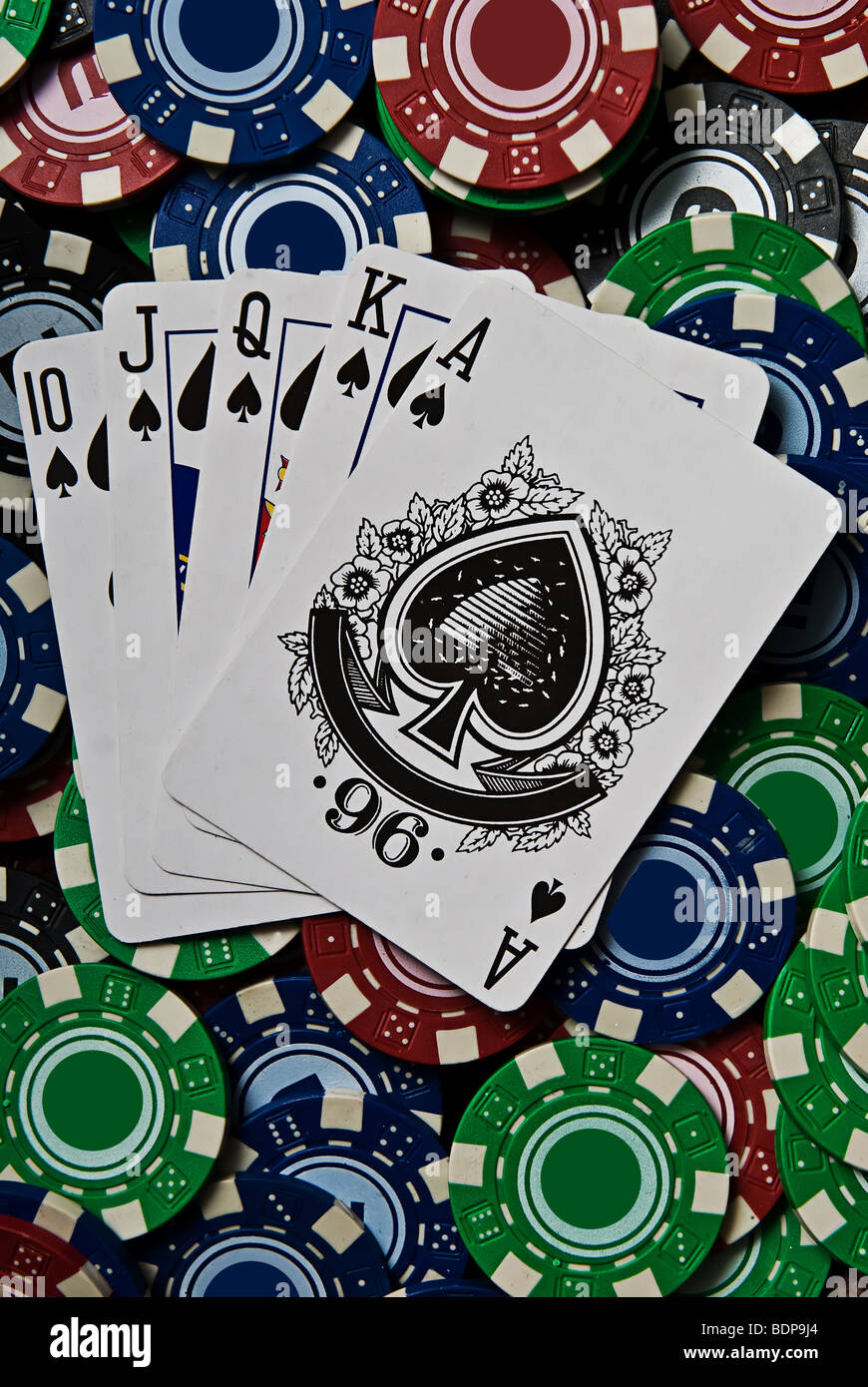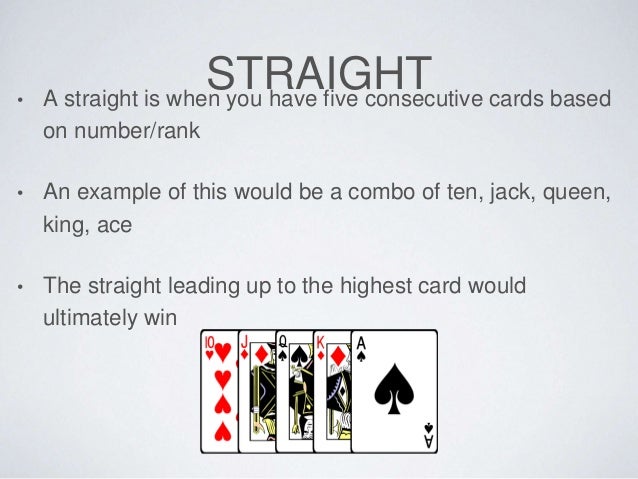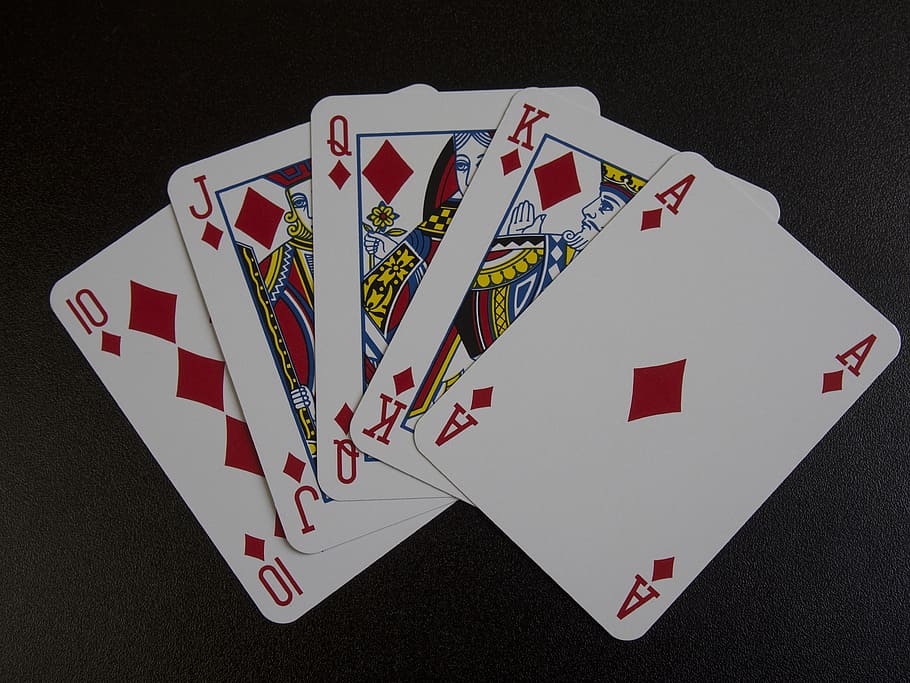- Poker 10 Jack Queen King Ace 2
- Ace King Queen Jack
- Poker 10 Jack Queen King Ace Two
- Kings And Queens Poker League
- Poker King Queen Jack Ace
10 Jack Queen King Ace with 4 cards of each denomination In poker a hand of 5 from IE 3302 at Louisiana State University. A standard poker deck has 52 cards, in four suits (clubs, diamonds, hears, spades) of thirteen cards each (2, 3., 10, Jack, Queen, King, Ace, in ascending order).0020 What is the probability of being dealt a flush (all five cards of the same suit)? Give two accurate non-zero decimal places. Note: Consider a straight flush to be a flush. Bookends - Each part of the end of the highest poker straight (top to bottom: Ace, King, Queen, Jack, Ten). Rounders Hand Made popular as the final hand in the movie 'Rounders'.
Poker 10 Jack Queen King Ace 2

In a deck of playing cards, the term face card (US) or court card (British)[1] is generally used to describe a card that depicts a person as opposed to the pip cards. They are also known as picture cards, or until the early 20th century, coat cards.
History[edit]
While playing cards were invented in China, Chinese playing cards do not have a concept of face cards. When playing cards arrived in Iran, the Persians created the first face cards. In their Ganjifeh decks, each suit had ten pip cards that are outranked by a mounted vizier and a seated king. Cards were transmitted further west where Mamluk Egypt created a third court card. The best preserved deck is located in the Topkapı Palace. To avoid idolatry,[2] the cards did not depict human faces and instead featured abstract designs or calligraphy for the malik (king), nā'ib malik (viceroy or deputy king) and thānī nā'ib (second or under-deputy).[3] It is possible that the Topkapı deck, a custom made luxury item used for display, does not represent the cards played by commoners. There are fragments of what may be Mamluk court cards from cheaper decks showing human figures which may explain why seated kings and mounted men appear in both Indo-Persian and European cards. Both Mamluk and modern European decks include three face cards per suit, or twelve face cards in a deck of four suits.[4][5]
The third court card may have had a special role to play since the Spanish, French, and Italians called the newly introduced cards naipe, nahipi, and naibi respectively as opposed to their Arabic name of Kanjifah. In a 1377 description of cards, the most common decks were structurally the same as the modern 52-card deck.[6] Each suit contained a seated king and two marshals, one holding the suit symbol upwards while the other downwards. The marshals correspond to the Ober and Unter ranks in modern-day German and Swiss playing cards. As marshals were cavalry commanders, both ranks may have been mounted unlike their modern counterparts. Less popular decks included ones in which two kings were replaced with queens, all the kings replaced by queens, queens and maids added so as to make 15 cards per suit, and 5 or 6 suited decks with only the kings and two marshal ranks.[5]
In Italy and Spain, the Unter and Ober were replaced by the standing Knave and the mounted Knight before 1390, perhaps to make them more visually distinguishable. The Spanish rank of Sota means 'under'. In 15th-century France, the knight was dropped in favour of the queen. The 15th-century Italian game of trionfi, which later became known as tarot, also added queens. The Cary-Yale deck had the most with six ranks: king, queen, knight, mounted lady, knave, and damsel or maid for a total of 24. It is unlikely that the Cary-Yale deck was designed for a game in mind as it was an expensive wedding gift and was probably never played. Standing kings are a Spanish innovation which was copied by the French.
Throughout most of their history, face cards were not reversible. Players may accidentally reveal that they hold a face card if they flip them right-side up. During the 18th century, Trappola and Tarocco Bolognese decks became the first to be reversible. The trend towards double-headed cards continued throughout the 19th and 20th centuries. Some patterns resisted the innovation, most notably Spanish-suited decks where full figured courts remain dominant.

Cards[edit]
Current playing cards are structured as follows:
- German and Swiss playing cards have three male face cards per suit, Unter/Under (a lower-class man or soldier), Ober (a higher ranking man), and König (a seated King).
- Italian and Spanish playing cards have the Fante or Sota (Knave, a younger man standing), Cavallo or Caballo (Knight or Cavalier, a man sitting on a horse) and Re or Rey (King, wearing a crown). Italian suited kings are seated while Spanish suited kings stand. A few Spanish suited patterns replace male knaves with female counterparts.
- French playing cards replaced the middle male with the Queen so it became Knave or 'Jack', Queen, and King. French suited Kings stand.
- French and Latin tarot decks have four face cards per suit. Their order is Knave, Knight, Queen, and King for a total of 16 face cards. Figures appearing on tarot trumps are not considered to be face cards.
While modern decks of playing cards may contain one or more Jokers depicting a person (such as a jester or clown), Jokers are not normally considered to be face cards. The earliest Jokers, known as Best Bowers, did not depict people until the late 1860s.
References[edit]
- ^Wedgwood, Hensleigh (1855). 'On False Etymologies'. Transactions of the Philological Society (6): 71.
- ^Origin of playing cards by Copag. Retrieved 18 February 2017.
- ^Jensen, K. The Mamluk cardsArchived 2015-04-26 at the Wayback Machine at Manteia. Retrieved 18 February 2017.
- ^Gjerde, Tor. Mamluk cards at old.no. Retrieved 18 February 2017.
- ^ abDummett, Michael; Mann, Sylvia (1980). The Game of Tarot. London: Duckworth. pp. 10–64.
- ^Johannes of Rheinfelden, 1377 at trionfi.com. Retrieved 18 February 2017.
A jack or knave is a playing card which, in traditional French and English decks, pictures a man in the traditional or historic aristocratic or courtier dress, generally associated with Europe of the 16th or 17th century. The usual rank of a jack, within its suit, plays as if it was an 11 (that is, between the 10 and the queen). As the lowest face (or 'court') card, the jack often represents a minimum standard — for example, many poker games require a minimum hand of a pair of jacks ('jacks or better') in order to continue play.
History[edit]
The earliest predecessor of the knave was the thānī nā'ib (second or under-deputy) in the Mamluk card deck. This was the lowest of the three court cards and like all court cards was depicted through abstract art or calligraphy. When brought over to Italy and Spain, the thānī nā'ib was made into an infantry soldier or page ranking below the knight card. In France, where the card was called the valet, the queen was inserted between the king and knight. The knight was subsequently dropped out of non-Tarot decks leaving the valet directly under the queen. The king-queen-valet format then made its way into England.
As early as the mid-16th century the card was known in England as the knave (meaning a male servant of royalty). Although jack was in common usage to designate the knave, the term became more entrenched when, in 1864,[1] American cardmaker Samuel Hart published a deck using 'J' instead of 'Kn' to designate the lowest-ranking court card. The knave card had been called a jack as part of the terminology of the game All Fours since the 17th century, but this usage was considered common or low class. However, because the card abbreviation for knave was so close to that of the king ('Kn' versus 'K'), the two were easily confused. This confusion was even more pronounced after the markings indicating suits and rankings were moved to the corners of the card, a move which enabled players to 'fan' a hand of cards without obscuring the individual suits and ranks. The earliest deck known of this type is from 1693, but such positioning did not become widespread until reintroduced by Hart in 1864, together with the knave-to-jack change. Books of card games published in the third quarter of the 19th century still referred to the 'knave' however, a term that is still recognized in the United Kingdom. (Note the exclamation by Estella in Charles Dickens's novel Great Expectations: 'He calls the knaves, jacks, this boy!')

Representations[edit]
In the English pattern,[2] the jack and the other face cards represent no one in particular,[3] in contrast to the historical French practice, in which each court card is said to represent a particular historical or mythological personage. The valets in the Paris pattern have traditionally been associated with such figures as Ogier the Dane (a knight of Charlemagne and legendary hero of the chansons de geste) for the jack of spades;[4]La Hire (French warrior) for the Jack of Hearts; Hector (mythological hero of the Iliad) for the jack of diamonds; and Lancelot or Judas Maccabeus for the jack of clubs.[5][6]
In some southern Italian decks, there are androgynous knaves that are sometimes referred to as maids. In the Sicilian Tarot deck, the knaves are unambiguously female and are also known as maids.[7] As this deck also includes queens, it is the only traditional set to survive into modern times with two ranks of female face cards. This pack may have been influenced by the obsolete Portuguese deck which also had female knaves. The modern Mexican pattern also has female knaves.[8]
Poetry[edit]
The figure of the jack has been used in many literary works throughout history. Among these is one by 17th-century English writer Samuel Rowlands. The Four Knaves is a series of Satirical Tracts, with Introduction and Notes by E. F. Rimbault, upon the subject of playing cards. His 'The Knave of Clubbs: Tis Merry When Knaves Meet' was first published in 1600, then again in 1609 and 1611. In accordance with a promise at the end of this book, Rowlands went on with his series of Knaves, and in 1612 wrote 'The Knave of Harts: Haile Fellowe, Well Meet', where his 'Supplication to Card-Makers' appears,[9] thought to have been written to the English manufacturers who copied to the English decks the court figures created by the French.
Ace King Queen Jack
Example cards[edit]
The cards shown here are from a Paris pattern deck (where the rank is known as the 'valet'), and include the historical and mythological names associated with them. The English pattern of the jacks can be seen in the photo at the top of the article.
Jack of spades: Ogier
Jack of hearts: La Hire
Jack of diamonds: Hector
Jack of clubs: Lancelot
Trickster figure[edit]
Poker 10 Jack Queen King Ace Two
The jack, traditionally the lowest face card, has often been promoted to a higher or the highest position in the traditional ranking of cards, where the ace or king generally occupied the first rank. This is seen in the earliest known European card games, such as Karnöffel, as well as in more recent ones such as Euchre. Games with such promotion include:
See also[edit]
- 'The Jack', a song by AC/DC, in which the playing card is a metaphor for a sexually transmitted disease
- The Knave of Hearts, a character in Lewis Carroll's Alice's Adventures in Wonderland
- The Jack of Diamonds, a group of artists founded in 1909 in Moscow
- 'Jack of Diamonds', a traditional folk song
- Jack of Diamonds, the title used by George de Sand in the 1994 anime Mobile Fighter G Gundam
- Knave of Hearts, a 1954 film directed by René Clément
- The Jack of Hearts (Jack Hart), a Marvel Comics superhero
- The Jack of Hearts, a 1919 short Western film
- 'Lily, Rosemary and the Jack of Hearts', a song by Bob Dylan
- Pub (trans. The Jack), an album by Đorđe Balašević.
- King, Queen, Knave, a novel by Vladimir Nabokov first published in Russian under his pen name, V. Sirin
References[edit]
| Wikimedia Commons has media related to Jacks (playing cards). |
Kings And Queens Poker League
- ^Encyclopedia of Play in Today's Society, p. 290, Rodney P. Carlisle - Sage Publications INC 2009 ISBN1-4129-6670-1
- ^English pattern at the International Playing-Card Society. Retrieved 26 January 2016.
- ^Berry, John. (1998). 'Frequently asked questions'. The Playing-Card. Vol. 27-2. pp. 43-45.
- ^Games and Fun with Playing Cards by Joseph Leeming on Google Books
- ^The Four King Truth at the Urban Legends Reference Pages
- ^Courts on playing cards, by David Madore, with illustrations of the English and French court cards
- ^Tarocco Siciliano, early form at the International Playing-Card Society. Retrieved 26 January 2016.
- ^Scotoni, Ralph. Mexican Pattern at Alta Carta. Retrieved 26 January 2016.
- ^The Knave of Harts: Haile Fellowe, Well Meet, where his Supplication to Card-Makers by Samuel Rowlands (1600)
Good card-makers (if there be any goodness in you), Apparrell us with more respected care,
Put us in hats, our caps are worne thread-bare, Let us have standing collers, in the fashion;